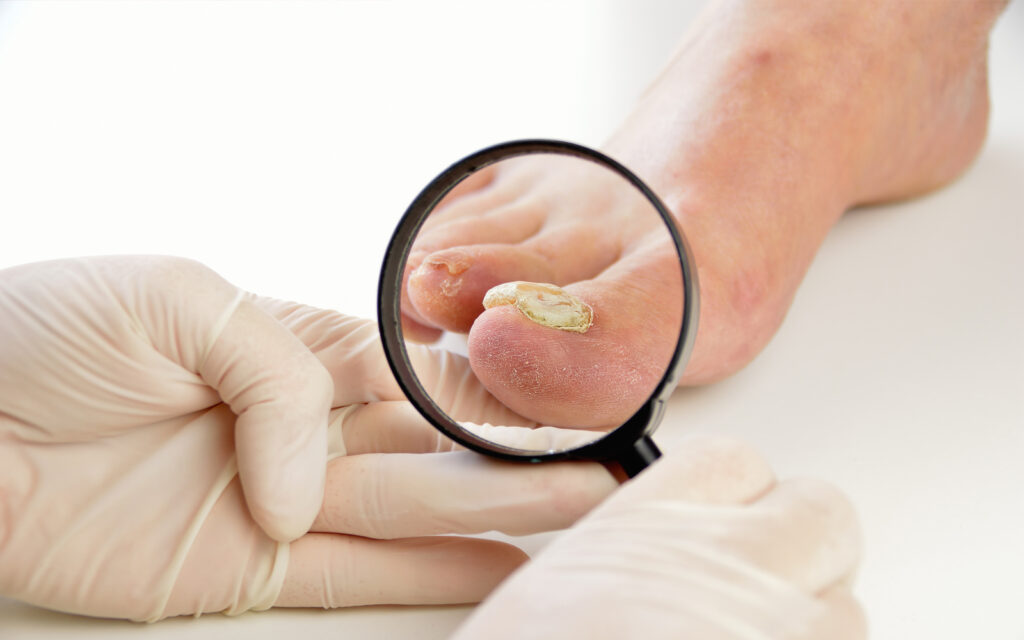Table of Contents
ToggleUnderstanding Nail Fungus
Nail fungus, also known as onychomycosis, is a common condition that affects many people. It usually begins as a white or yellow spot under the tip of your fingernail or toenail and can spread deeper into the nail. This condition can cause the nail to discolor, thicken, and crumble at the edge, often accompanied by pain.
How Nail Polish Can Contribute to Nail Fungus
1. Trapping Moisture
One of the primary ways nail polish can contribute to nail fungus is by trapping moisture. Fungus thrives in warm, moist environments. When you apply nail polish, it can create a barrier that holds moisture in, especially if the nails are already exposed to water frequently.
2. Lack of Airflow
Nail polish forms a seal over the nail, limiting the airflow. Reduced airflow can create a perfect breeding ground for fungus. The lack of oxygen under the nail polish may encourage fungal growth and make it harder for the nail to recover.
3. Sharing Nail Polish or Tools
Sharing nail polish or manicure tools can also spread fungal infections. If someone with a fungal infection uses nail polish or tools and another person uses the same without proper sterilization, the infection can easily transfer.
How Nail Polish Worsens Existing Nail Fungus
1. Hiding Symptoms
Nail polish can hide the symptoms of nail fungus, making it harder to diagnose and treat. The discoloration and changes in nail texture might be masked by the polish, delaying necessary treatment.
2. Prolonging Infection
Continuous application of nail polish can prolong the infection by maintaining the moist, sealed environment that fungi need to thrive. This can make it more difficult to treat the infection effectively.

Preventing Nail Fungus When Using Nail Polish
1. Use Antifungal Nail Polish
If you are prone to nail fungus or are recovering from it, consider using antifungal nail polish. These products contain ingredients that help prevent fungal growth while allowing you to enjoy painted nails.
2. Practice Good Nail Hygiene
Good nail hygiene is crucial in preventing nail fungus. Ensure that your nails are clean and dry before applying nail polish. Regularly trim your nails and clean underneath them to reduce the risk of fungal infections.
3. Avoid Sharing Nail Tools
To prevent the spread of nail fungus, avoid sharing nail tools, including nail polish, with others. Always sterilize your manicure tools before and after use.
4. Limit Prolonged Use of Nail Polish
Avoid keeping nail polish on for extended periods. Give your nails time to breathe between manicures. This helps prevent the buildup of moisture and reduces the risk of fungal growth.
5. Opt for Breathable Nail Polishes
Some nail polishes are designed to be more breathable, allowing better airflow to the nails. These can be a healthier option, especially if you are concerned about nail fungus.
Best Practices for Treating Nail Fungus
1. Early Diagnosis and Treatment
The earlier you diagnose and treat nail fungus, the better. If you notice any signs of nail fungus, such as discoloration, thickening, or crumbling nails, consult a healthcare professional promptly.
2. Use Over-the-Counter Antifungal Treatments
There are many over-the-counter antifungal treatments available. These can be effective, especially in the early stages of nail fungus. Follow the instructions carefully for the best results.
3. Consider Prescription Medications
For more severe cases of nail fungus, prescription medications may be necessary. Your doctor can prescribe oral antifungal drugs or medicated nail polish to treat the infection.
4. Maintain a Healthy Diet
A healthy diet can strengthen your immune system and help your body fight off infections, including nail fungus. Include foods rich in vitamins and minerals that support nail health.
Conclusion
While nail polish itself does not directly cause nail fungus, it can create conditions that allow fungal infections to thrive or worsen. By understanding the risks and practicing good nail hygiene, you can enjoy beautiful nails without compromising their health. If you suspect a fungal infection, seek treatment early to prevent complications.
FAQ
1 .Can I wear nail polish if I have nail fungus?
It is generally not recommended to wear regular nail polish if you have nail fungus, as it can worsen the condition. Opt for antifungal nail polish instead.
2 .How can I prevent nail fungus when using nail polish?
Use antifungal nail polish, practice good nail hygiene, avoid sharing nail tools, limit prolonged use of nail polish, and consider using breathable nail polishes.
3 .Can nail salons spread nail fungus?
Yes, if proper sanitation practices are not followed, nail salons can spread nail fungus. Ensure that the salon sterilizes its tools and uses fresh supplies for each customer.
4 .What are the signs of nail fungus?
Signs of nail fungus include discoloration, thickening, brittleness, and crumbling of the nails. If you notice any of these symptoms, seek medical advice.
5 .How long does it take to treat nail fungus?
Treatment duration varies depending on the severity of the infection. Mild cases may take a few weeks, while more severe infections can take several months to fully resolve.
It is important for people considering skin tag removal in plano , laser hair removal in plano ,microneedling in plano, Hydrafacial in plano, Microdermabrasion plano, Laser electrolysis plano, Nail Fungus plano, Rosacea Treatment in plano, Spider Vein Removal plano, Wrinkle Reduction in plano, Botox in plano, Hifu in plano,Oxygeno Facial in Plano to undergo a full consultation with a qualified doctor or cosmetologist – Aesthetician Nasrin, – to assess their suitability for this procedure and discuss their .
No comment yet, add your voice below!